Wizardpost: Grimoire
5/3/2025
End of Wizardposts
Last week, my wizard character was killed off in the D&D campaign I've been in for over a year. This will be the final wizardpost. However, I have greatly enjoyed these wizard posts.
Grimoire
A grimoire, or spell tome, or spellbook, is a book of spells that a Wizard uses for reference.
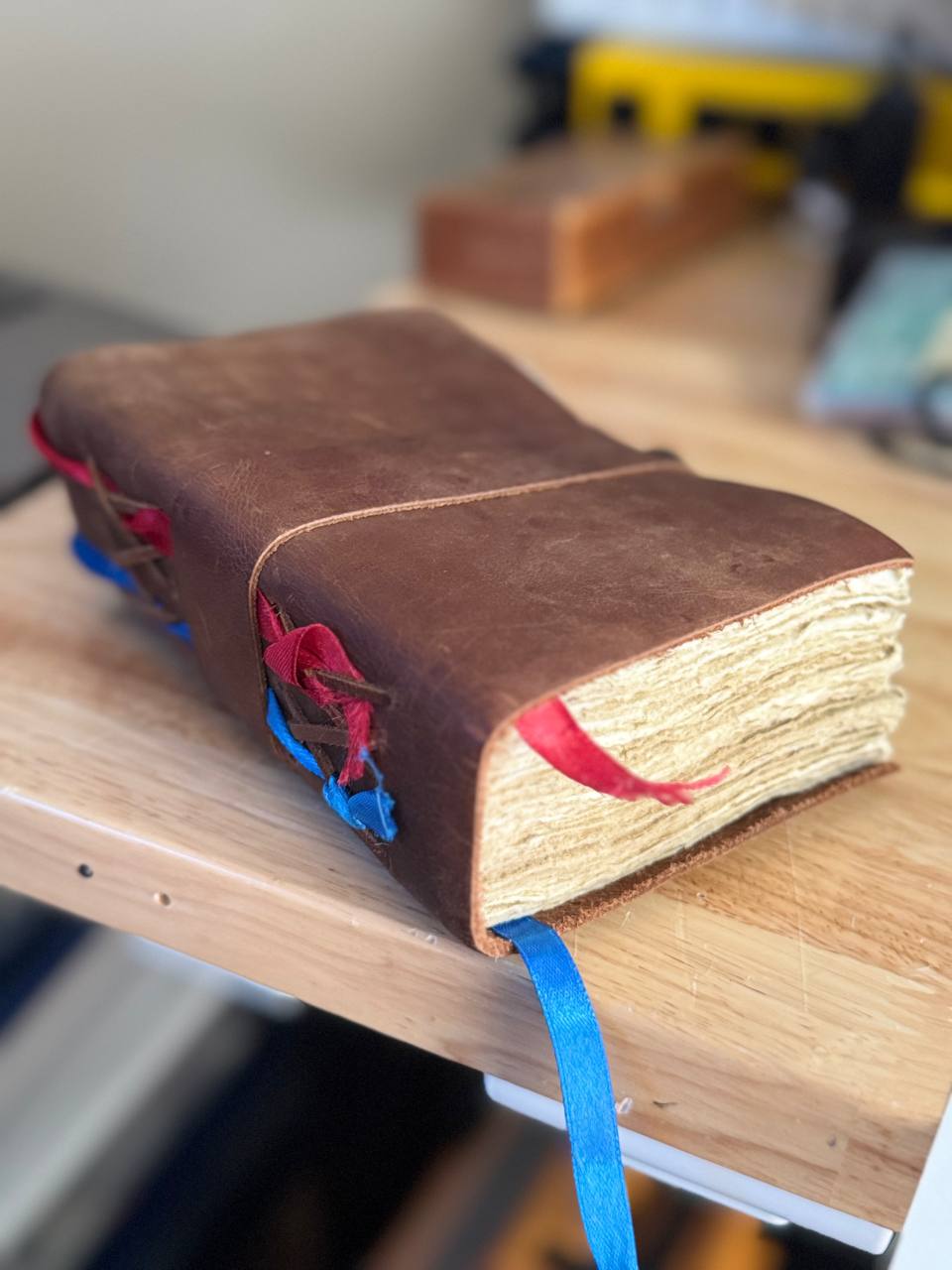
According to the D&D 5E player's handbook,
Your spellbook is a unique compilation of spells, with its own decorative flourishes and margin notes. It might be a plain, functional leather volume that you received as a gift from your master, a finely bound gilt-edged tome you found in an ancient library, or even a loose collection of notes scrounged together after you lost your previous spellbook in a mishap.
A spellbook is custom tailored and designed by the wizard who owns the book. There is no standard language for spells to be written in, and there is no standard set of symbols. In this endeavor, I sought to create my own literal spellbook based on what was outlined here.
Reading the Spellbook
The basic principles of reading the spellbook are detailed below. Please note that this is not all-encompassing, since many spells in D&D have unique quirks that cannot be captured by an overarching system.
Number Threads
To start my spellbook, I created a standard to represent numbers with. I based it off of a mix of Roman Numerals and base-ten numbers. To prevent the confusion present in Roman Numerals, it is a strictly additive system. You add starting from the left.
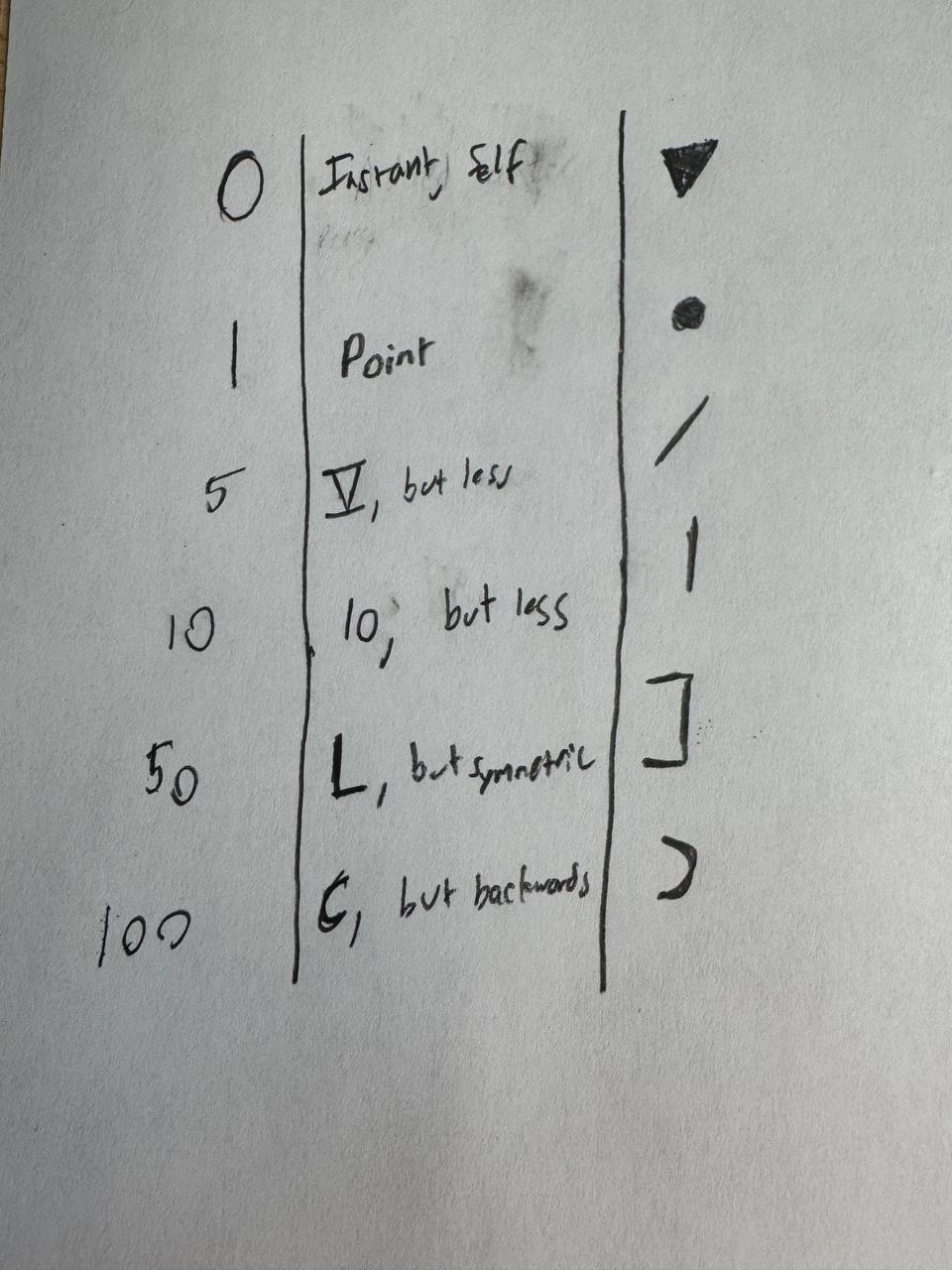
I also wanted them to be strung together, to really make these look magical.
A few examples are written below.
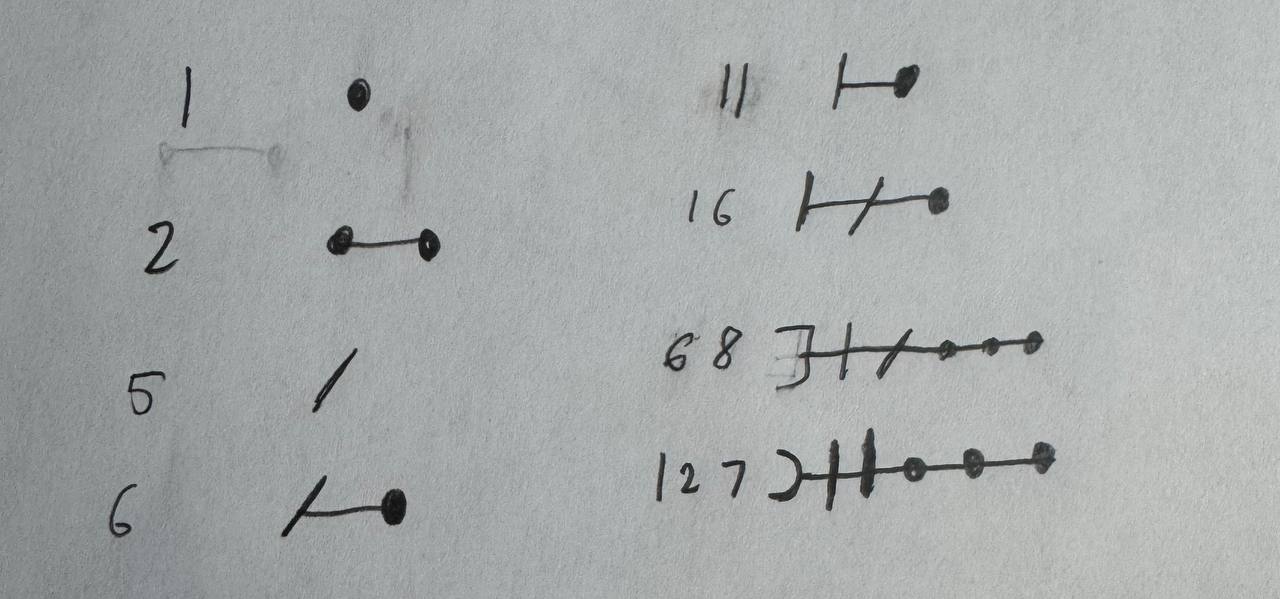
I call these Number Threads.
Duration Threads
The next step was to represent spell casting times and durations. In a Duration Thread, the first dot represents the amount of time being represented by subsequent markers.

A few D&D specific times are represented as well.
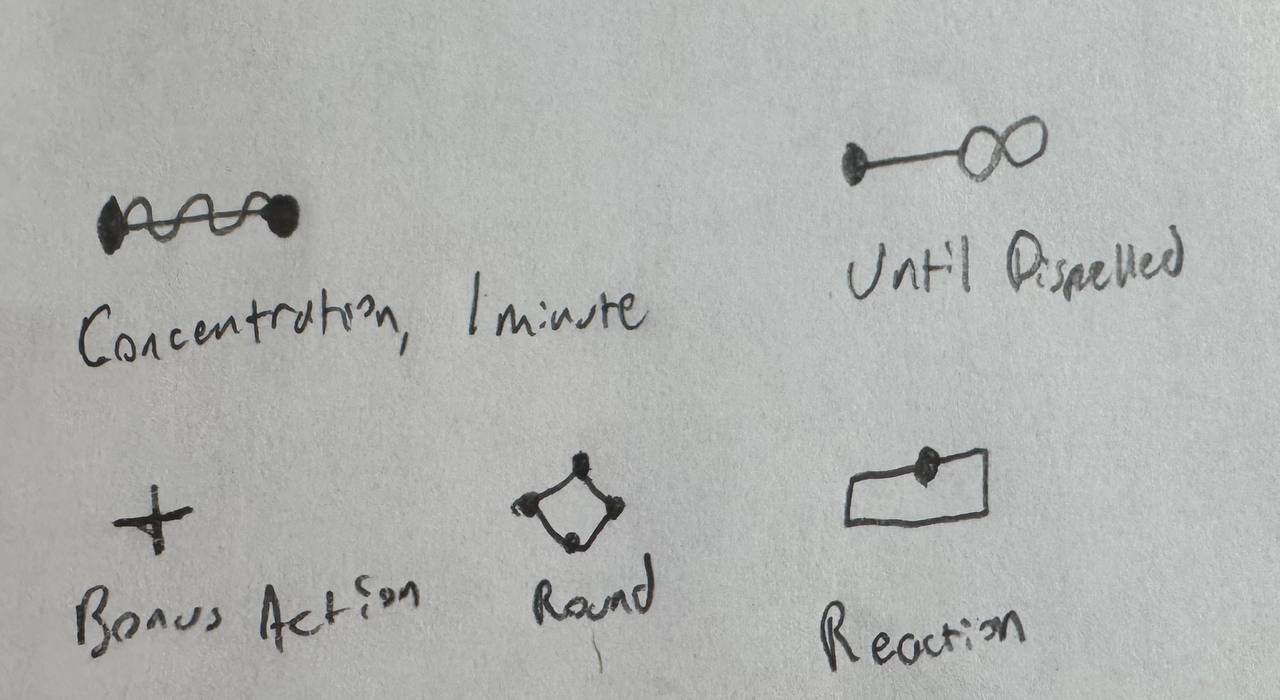
Distance Threads
Distance Threads are represented in a similar way to Duration Threads, with one exception - they are always vertical. They always end with a star. This was inspired by the diagrams from the Player's Handbook.
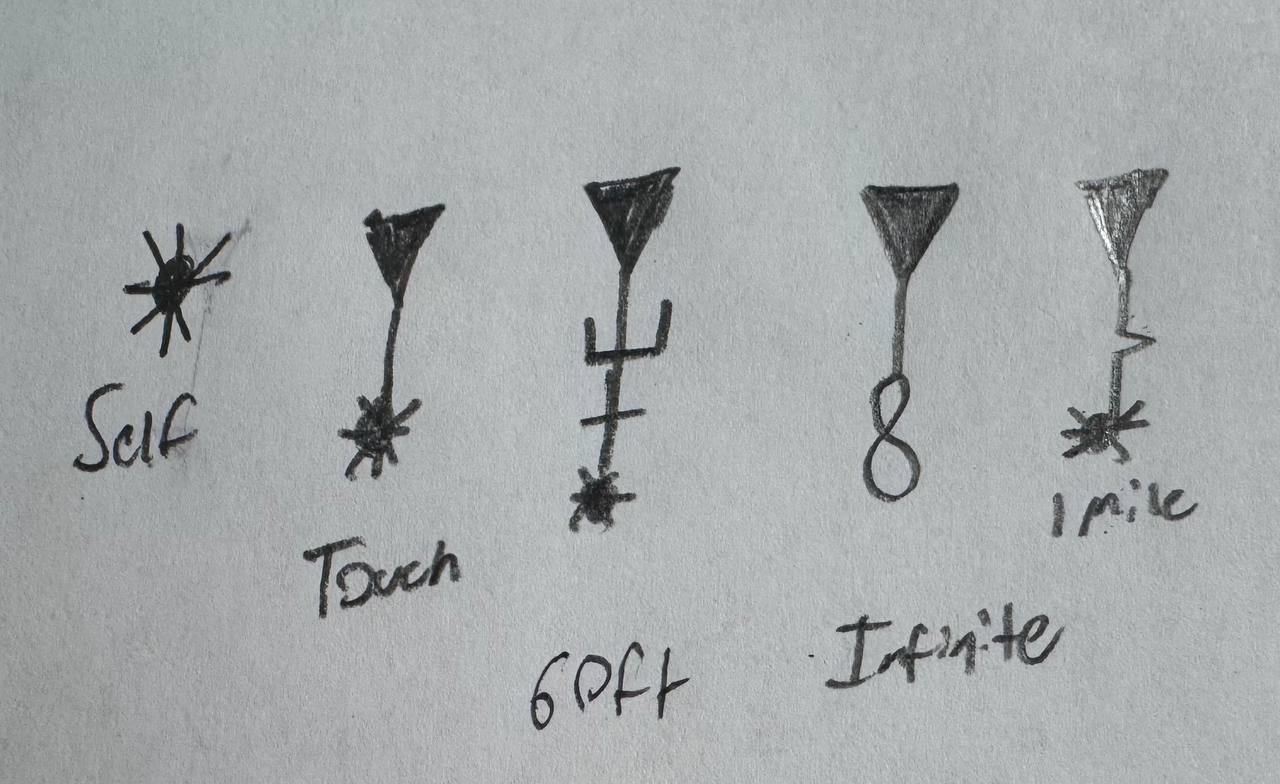
Targets and Spell Shapes
Many spells are described with shapes that they are cast in. These shapes are represented within the Distance Thread. The following image shows each of the spell shapes with a 60ft example.
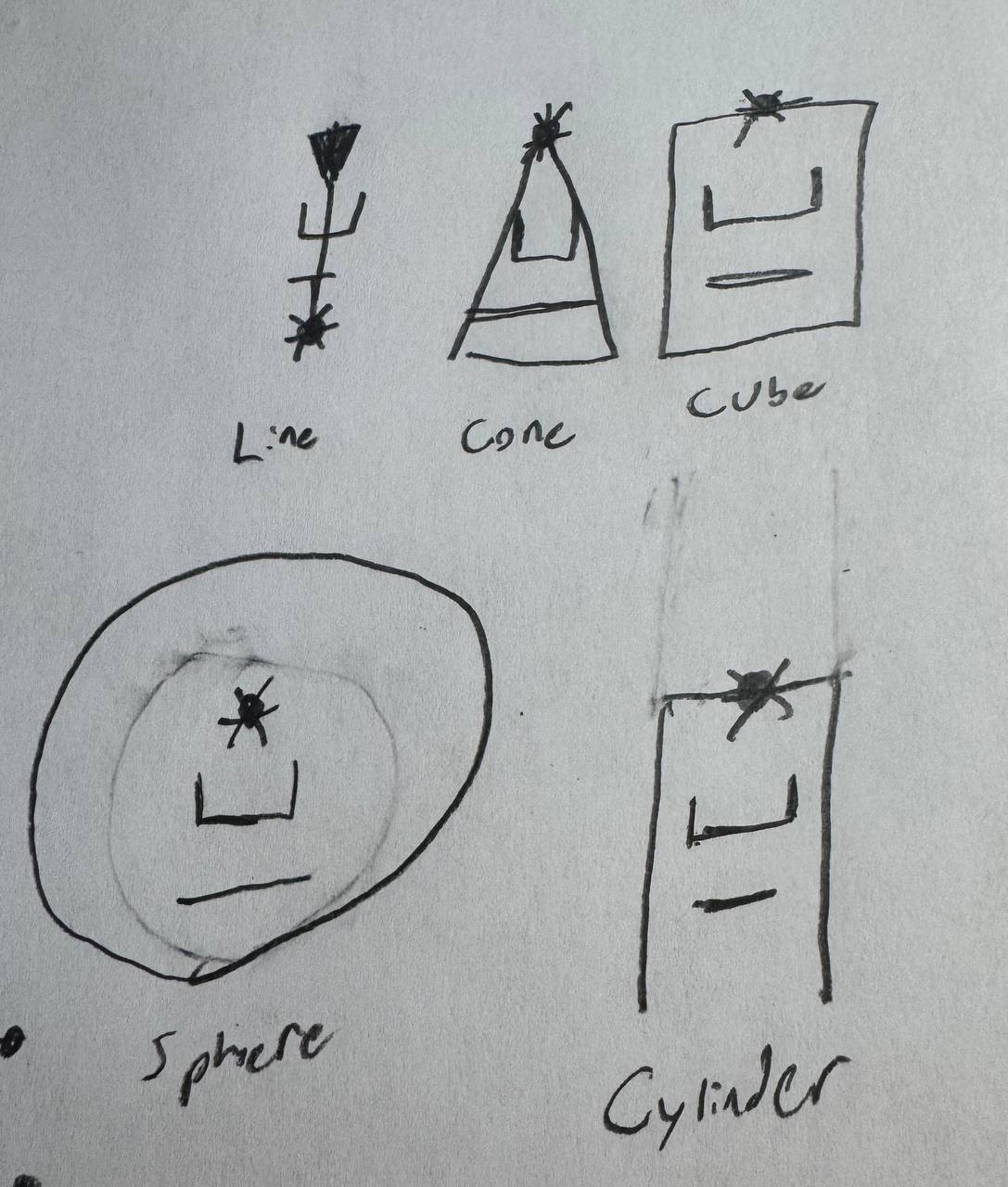
Saving Throws
Saving Threads are always encompassed in a shield.
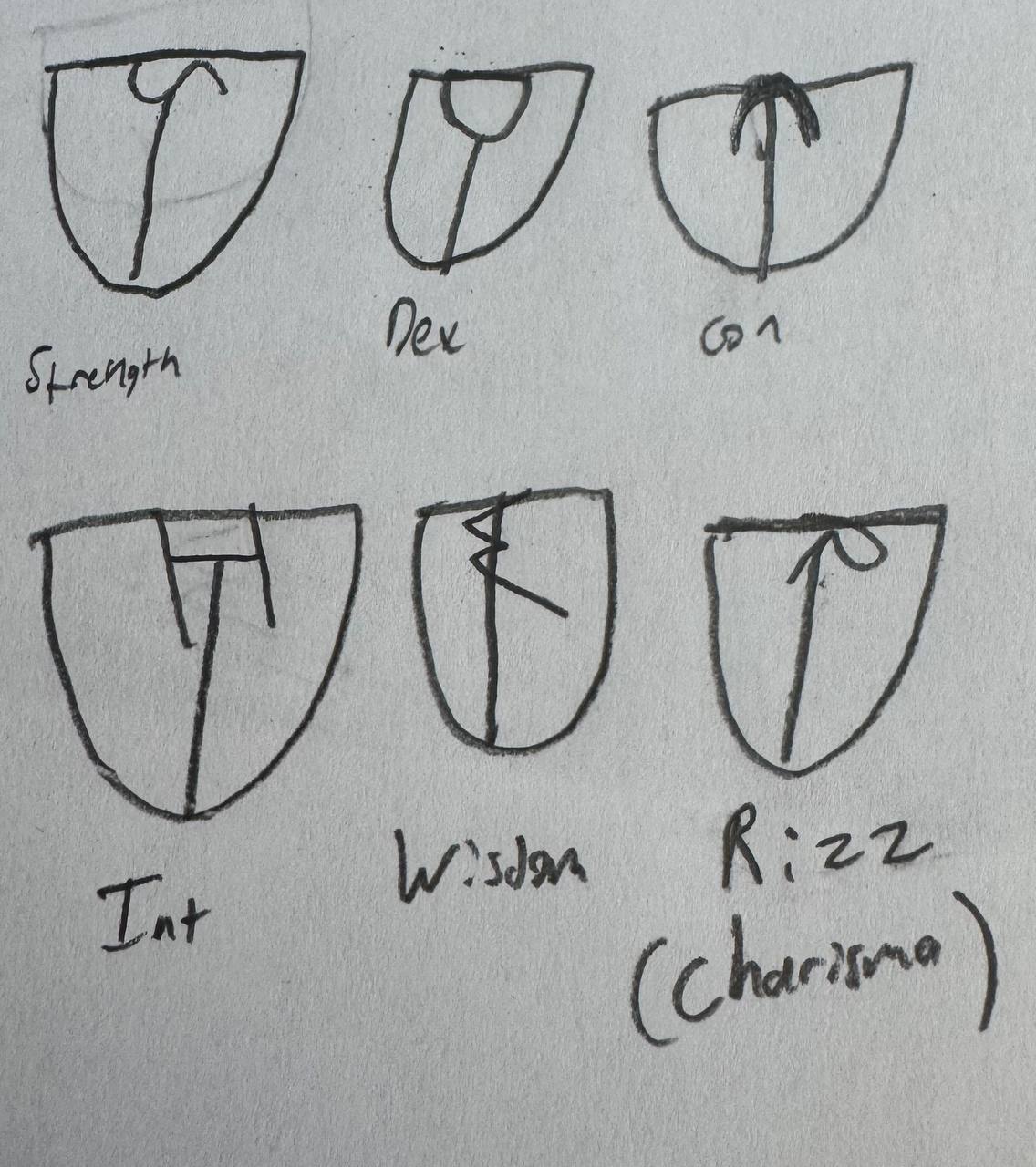
Components
Most spells are only cast with simple components. Those that are not have special symbols to denote the component for that spell. The three simple components are represented as such.
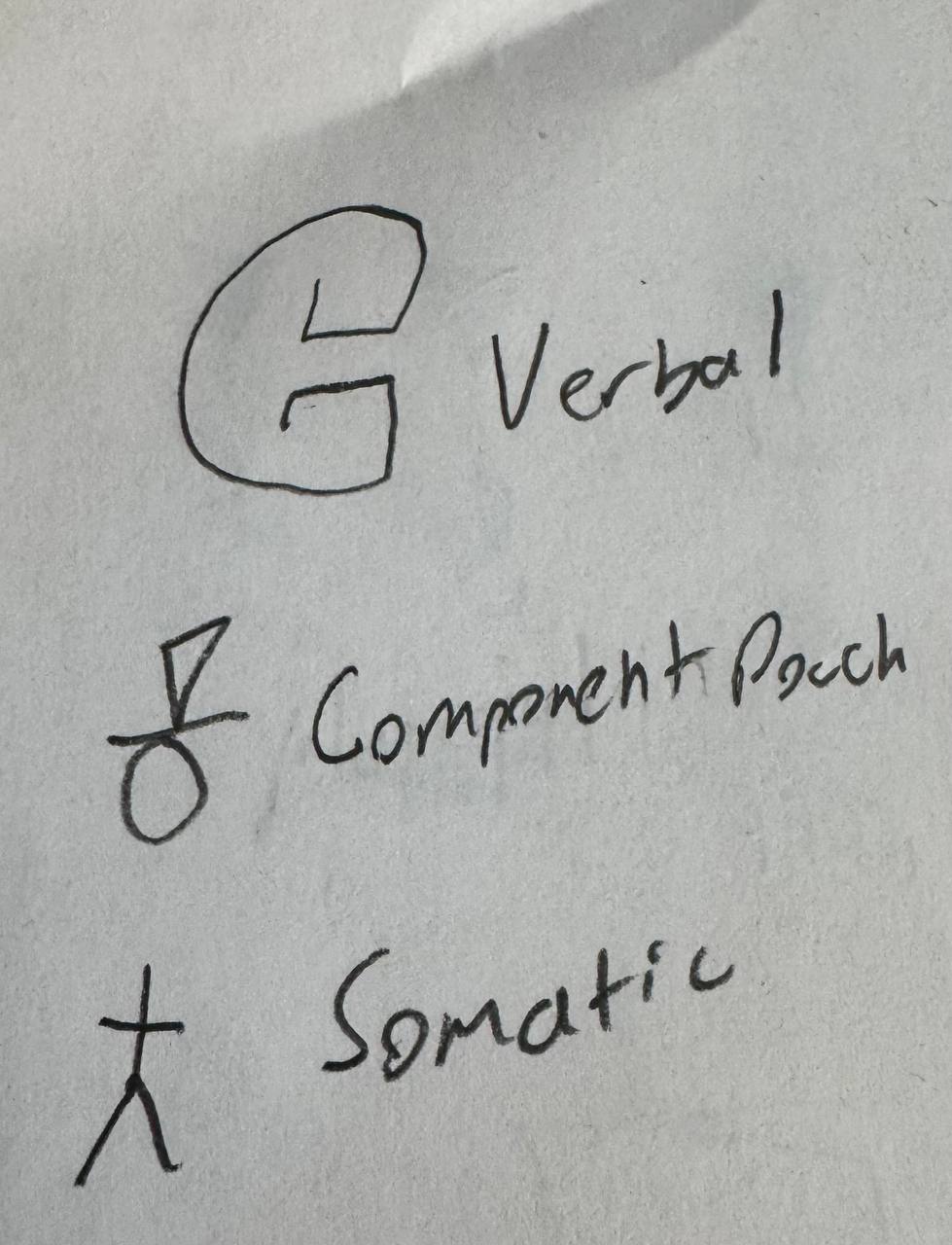
Schools
There are 8 primary schools of magic in D&D. I created symbols for each of the 8 schools below.
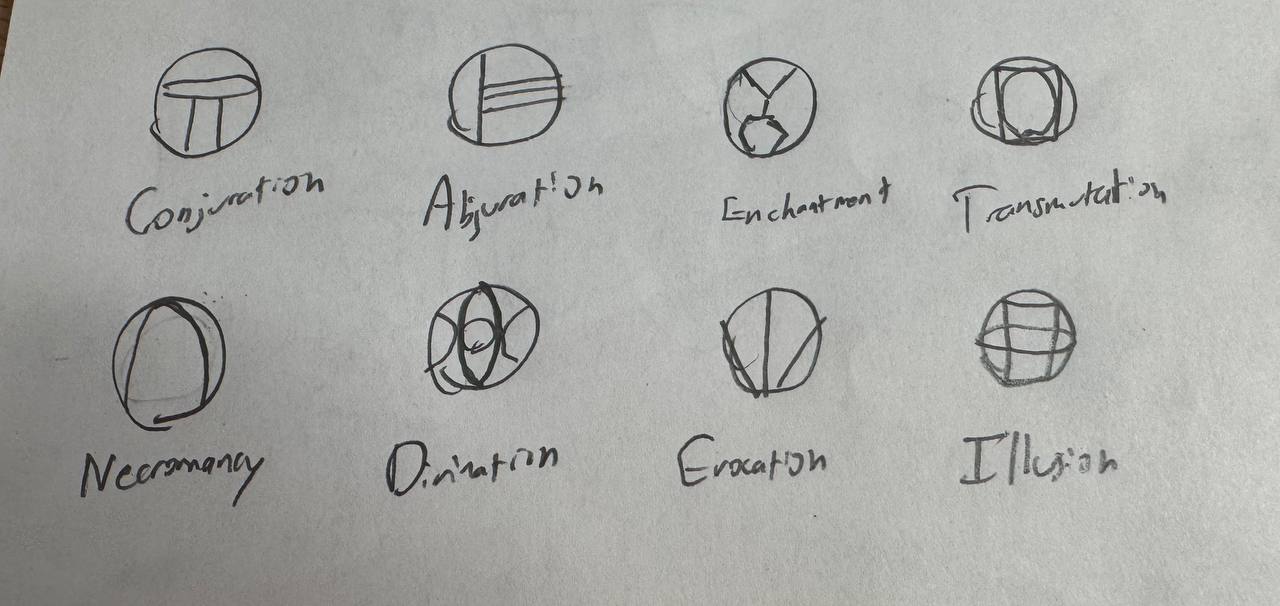
Layout
The layout for each page is as below.
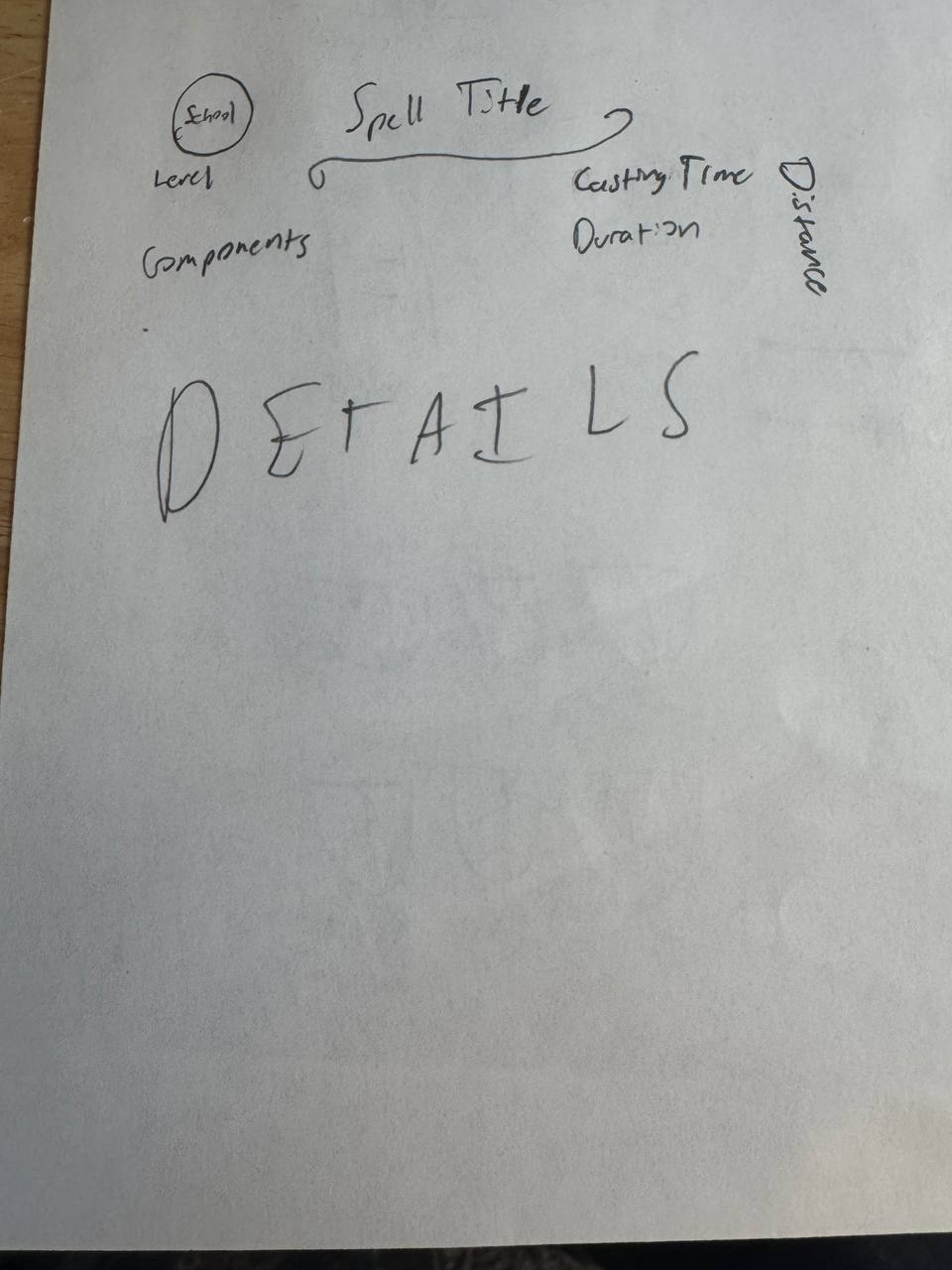
Spells in the Book

























